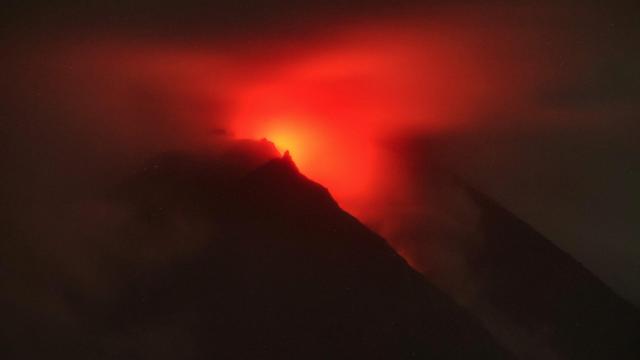Dozens of volcanic eruptions in the last 60,000 years were larger than the massive 1815 eruption of Indonesia’s Mount Tambora, the largest in recorded history, according to a team of scientists that recently analysed sulfuric residues in ancient ice cores.
The ice cores the researchers analysed came from six different sites — three from the Greenland ice sheet and three from Antarctica. By comparing how greenhouse gases and sulfate aerosols were distributed in the cores, the scientists were able to line up the eruptions they came from chronologically. Then, the team estimated the amount of sulfate aerosols the eruptions spewed into Earth’s atmosphere. The team’s findings were published this week in Climate of the Past.
“The long-term goal is to understand the climate system, and volcanism is an important part of it,” said Anders Svensson, a climate scientist at the University of Copenhagen’s Niels Bohr Institute, in a video call. “The better we can quantify and understand volcanism, the better we understand the climate system.”
When Mount Tambora erupted in 1815, its ash plume blocked out sunlight and caused a cooler climate in the ensuing years, so severely that 1816 is referred to as the “year without a summer.” The recent research team worked further back in time to see how similarly violent eruptions affected the planet’s climate.
The aerosols volcanoes produce get carried throughout the atmosphere by winds, and they stay longer in the air than the more massive tephra (rock and ash) that the volcano upheaves. Because tephra wasn’t present in the ice cores — it doesn’t travel very far latitudinally, Svensson said — the research team was unable to pinpoint where every volcanic eruption they detected occurred. But they could figure out how intense the eruptions were.

Three of the 69 eruptions larger than Tambora fall under the most powerful ranking on the Volcanic Explosivity Index (VEI), the researchers calculated. (The Toba supervolcano eruption is in the same class.) More eruptions happened as Earth was deglaciating, which the team described as a tectonic response to thawing ice.
The team noted that learning how the climate responded to increased amounts of greenhouse gases in the atmosphere following volcanic eruptions could be used to understand the planet’s response to climate change as it continues.
“Climate models are struggling a bit with this climate sensitivity,” Svensson said. “I mean, how much temperature change will we get from, for example, the doubling of CO2? There’s a very wide range in the IPCC report, and it’s something that needs to be constrained better. And volcanic eruptions — large ones — are a way to try to improve the climate models in that respect.”
Though much of the Earth’s ice is melting now, it will not cause the same increase in volcanic activity as the last deglaciation did, Svensson added, as the amount of melt doesn’t compare.
More: Hawaii’s Kīlauea Volcano Erupts as New Lake of Lava Forms
